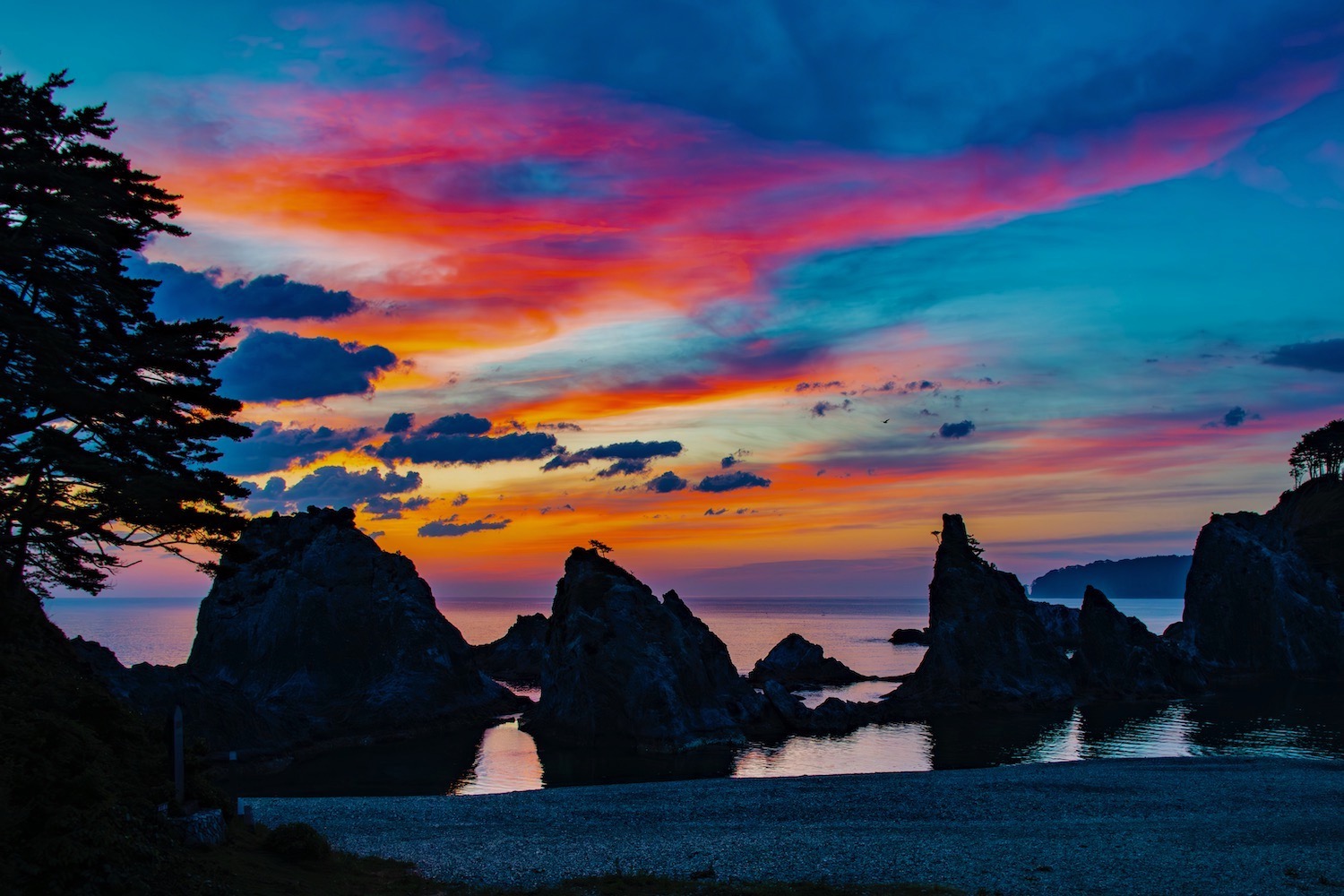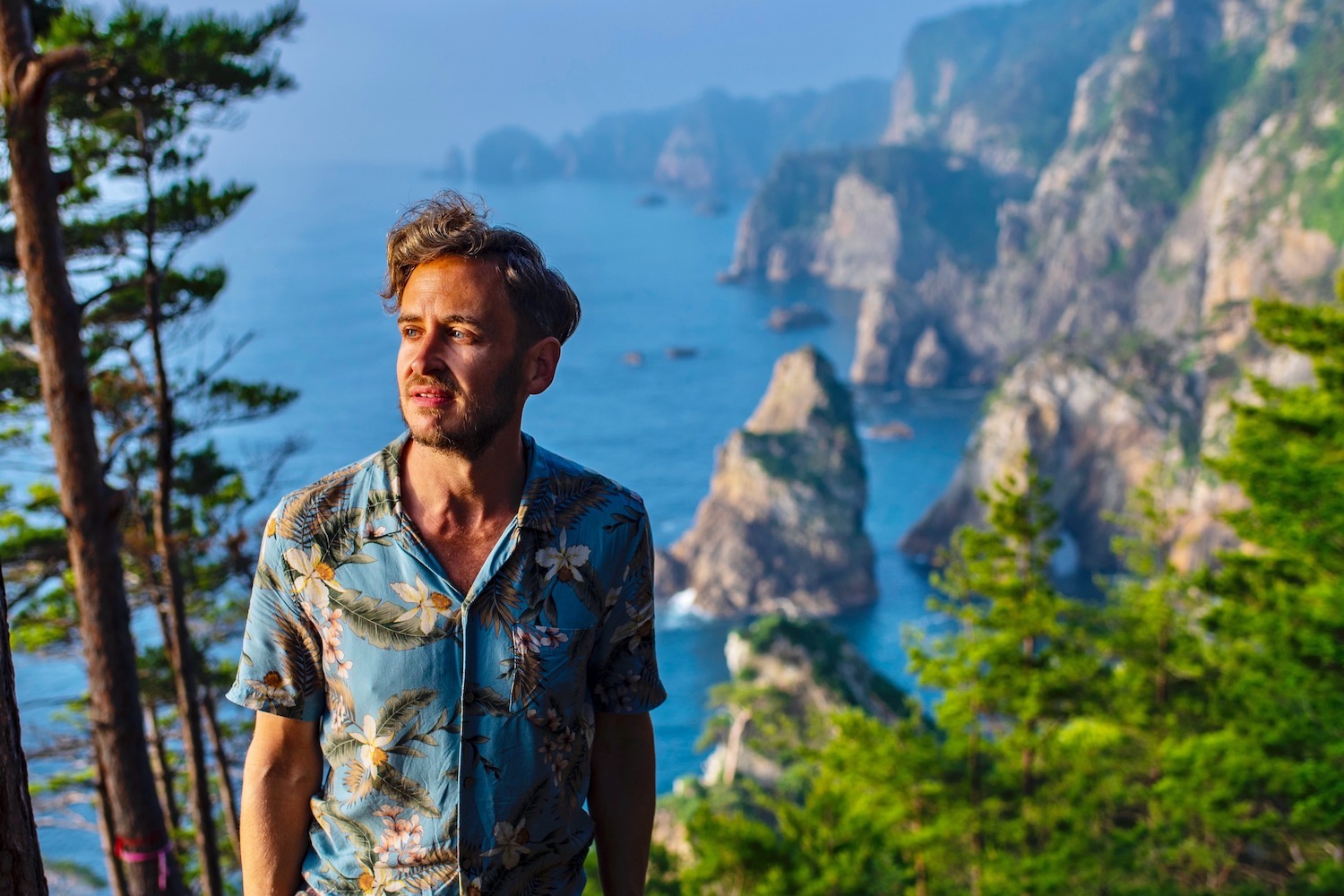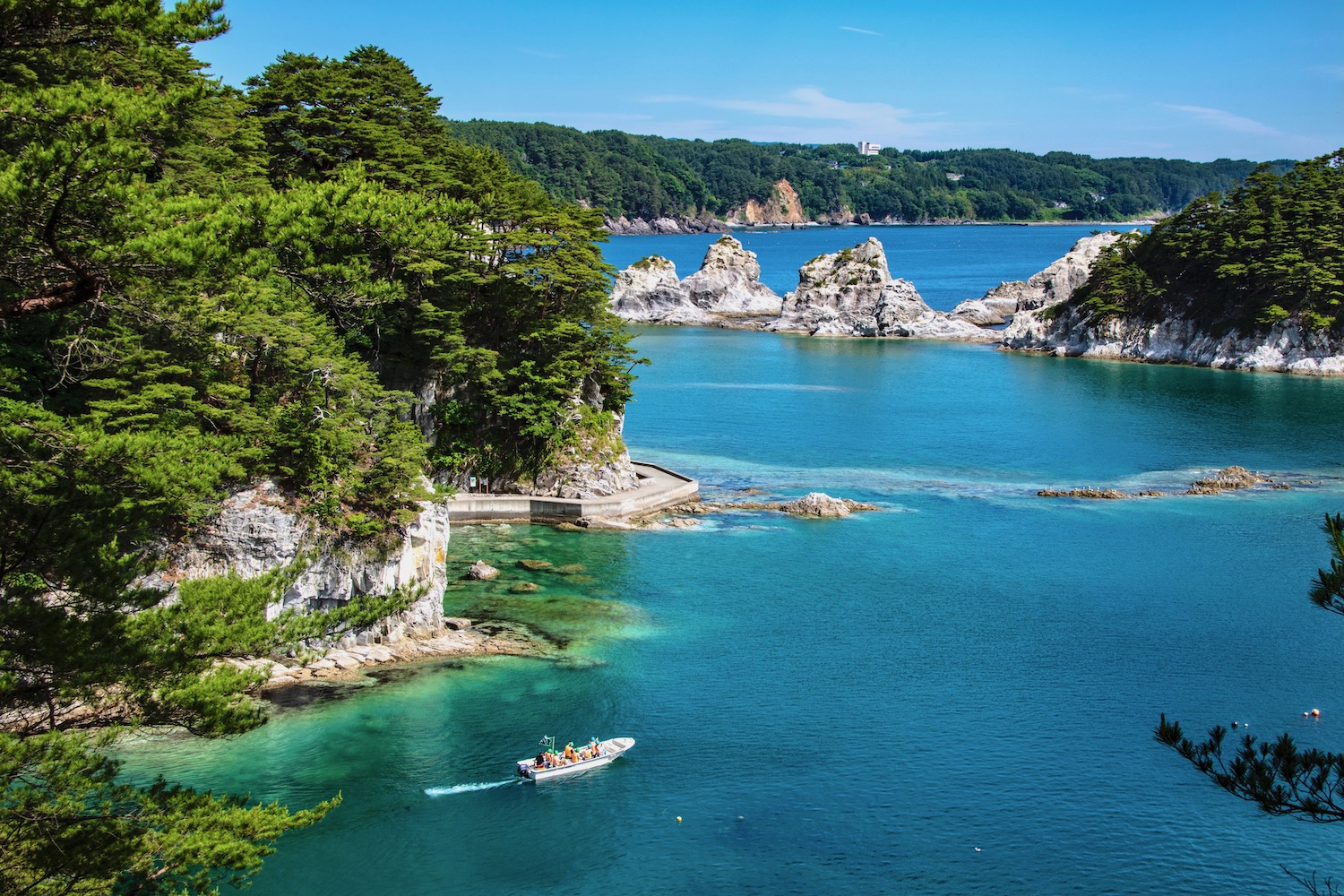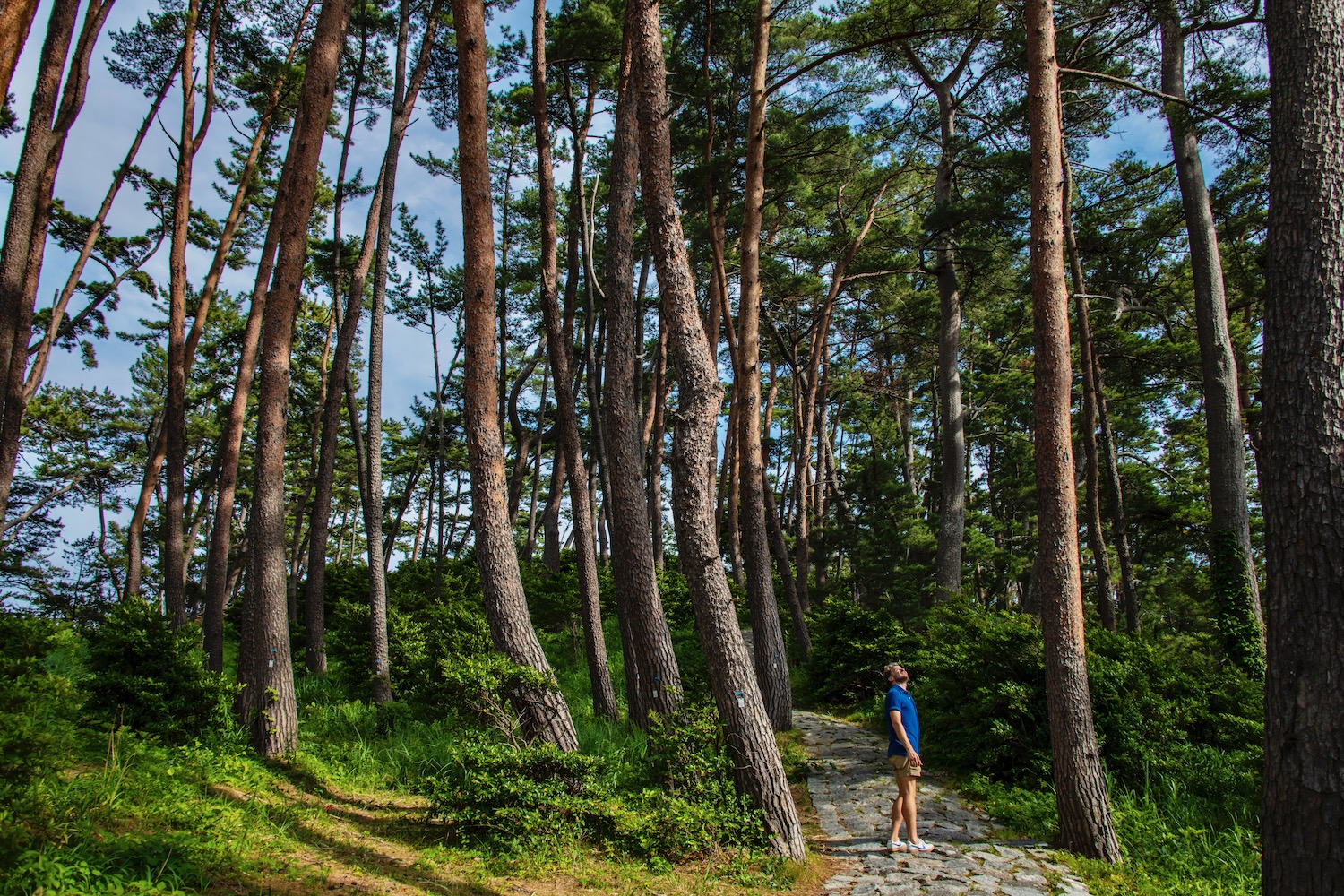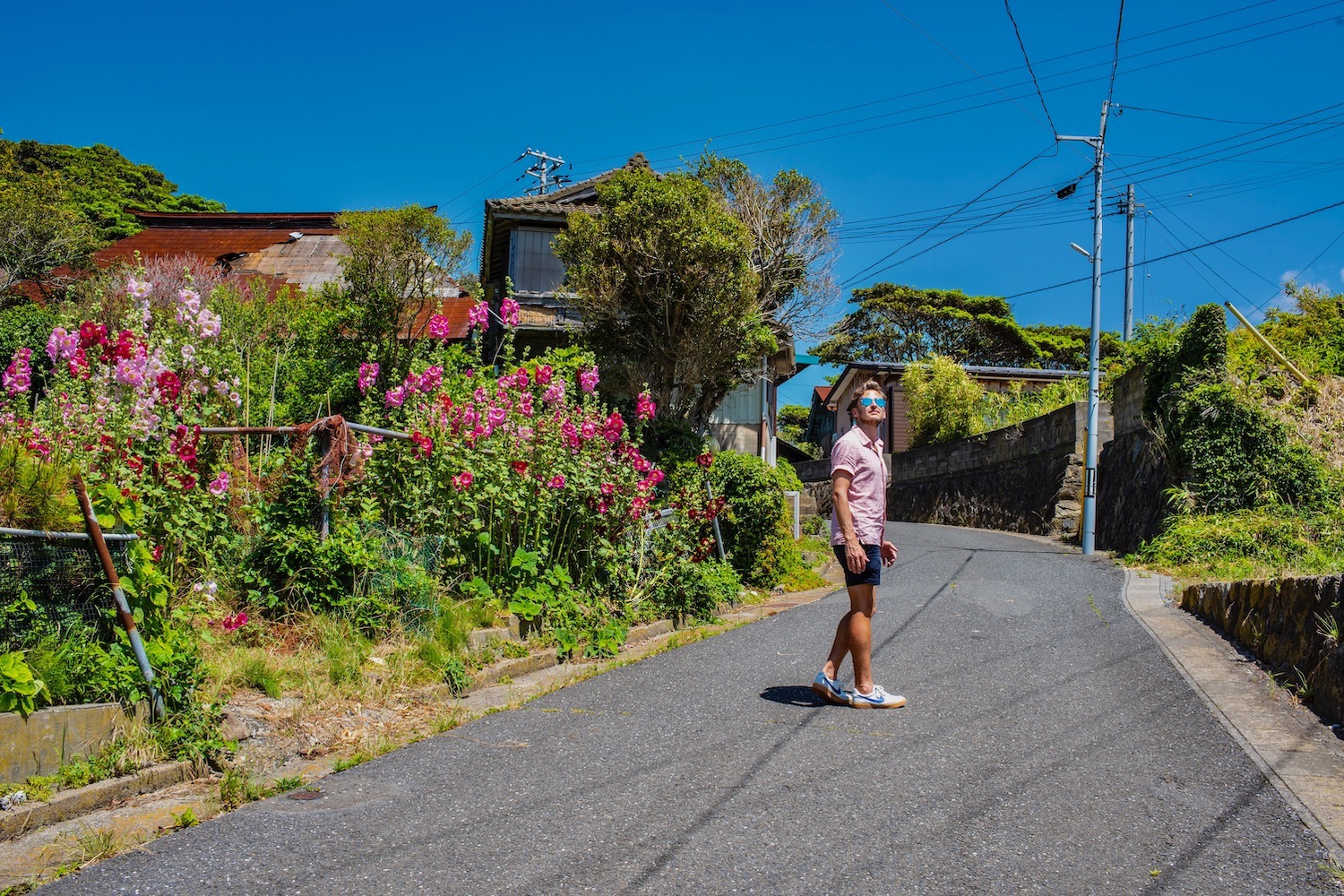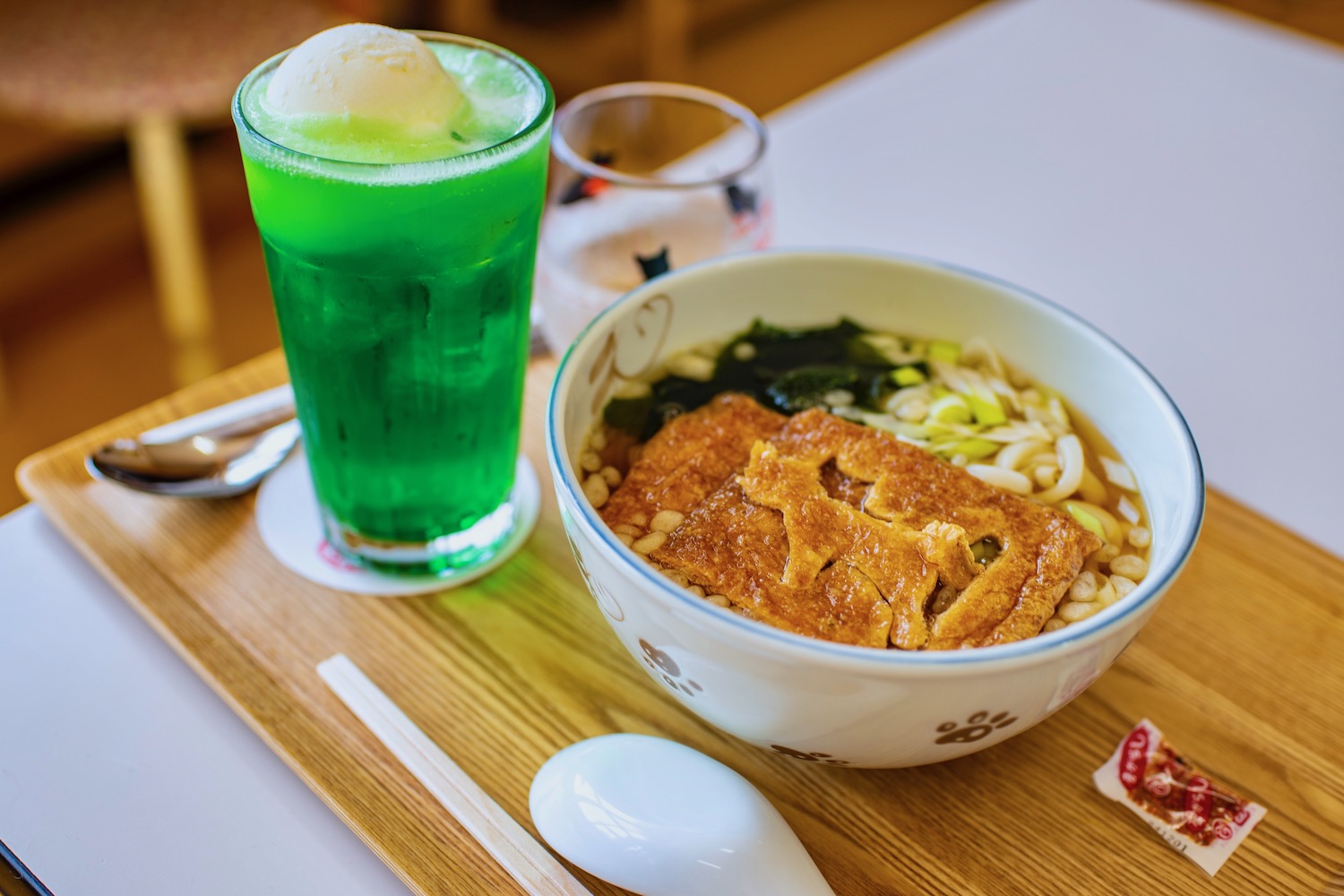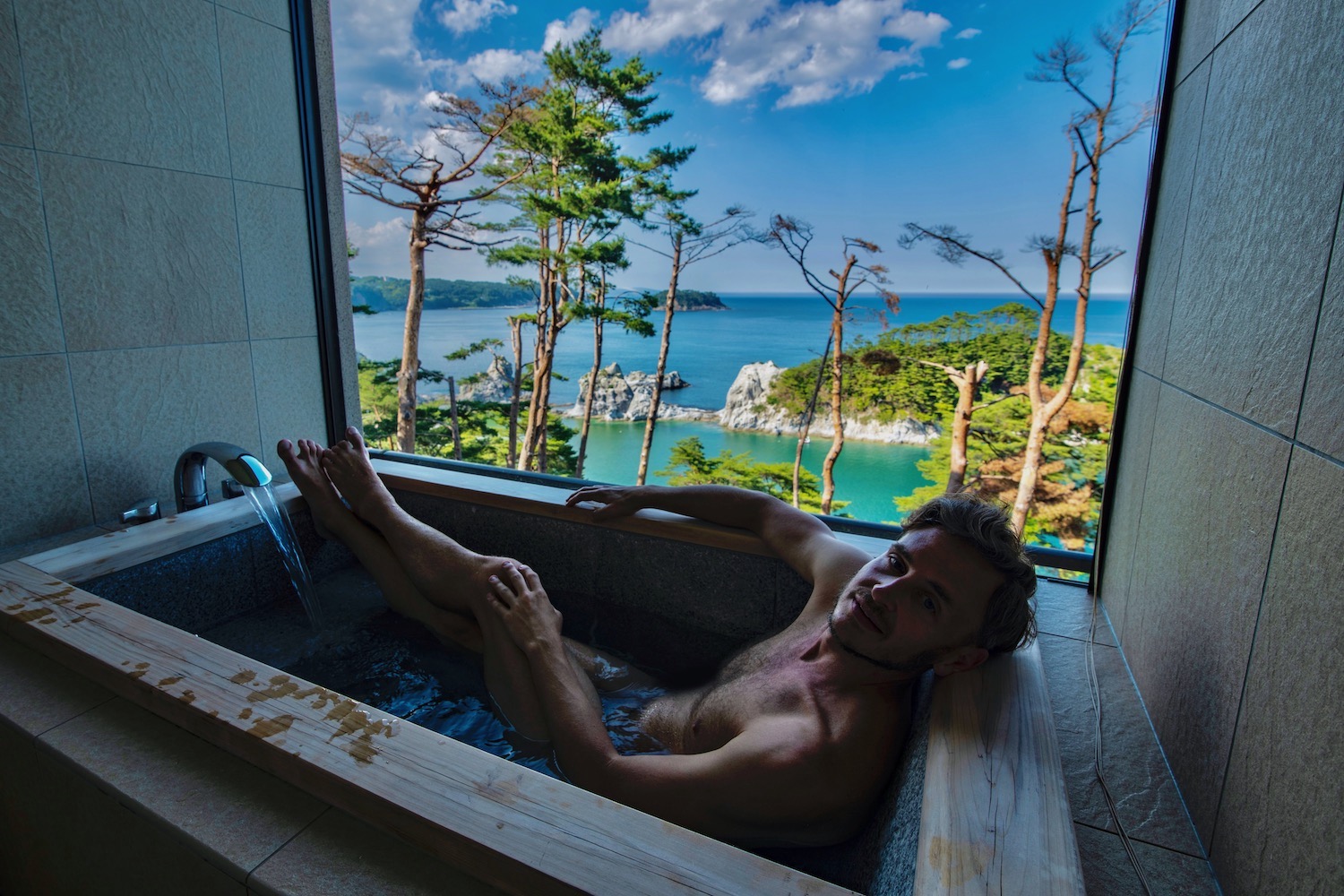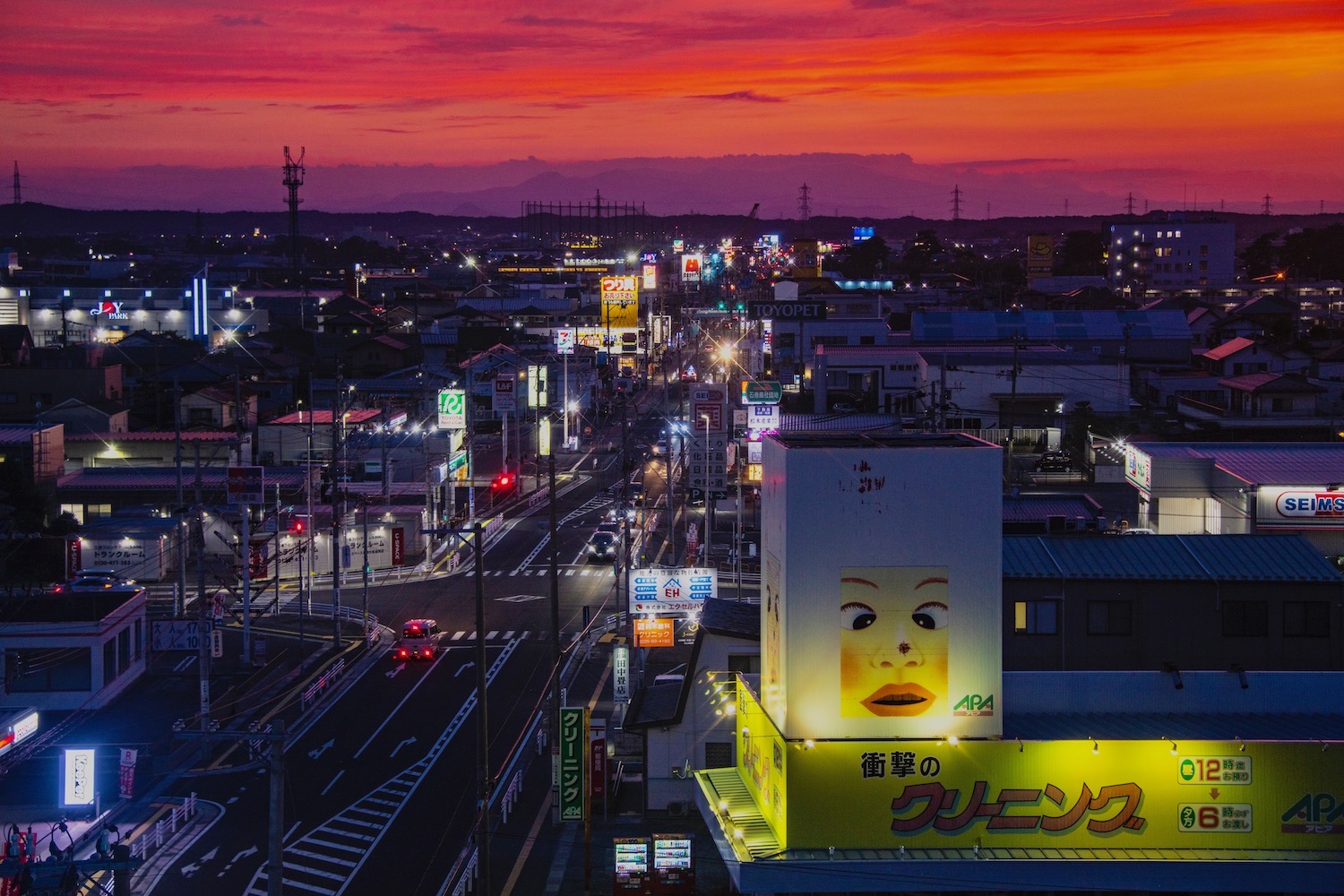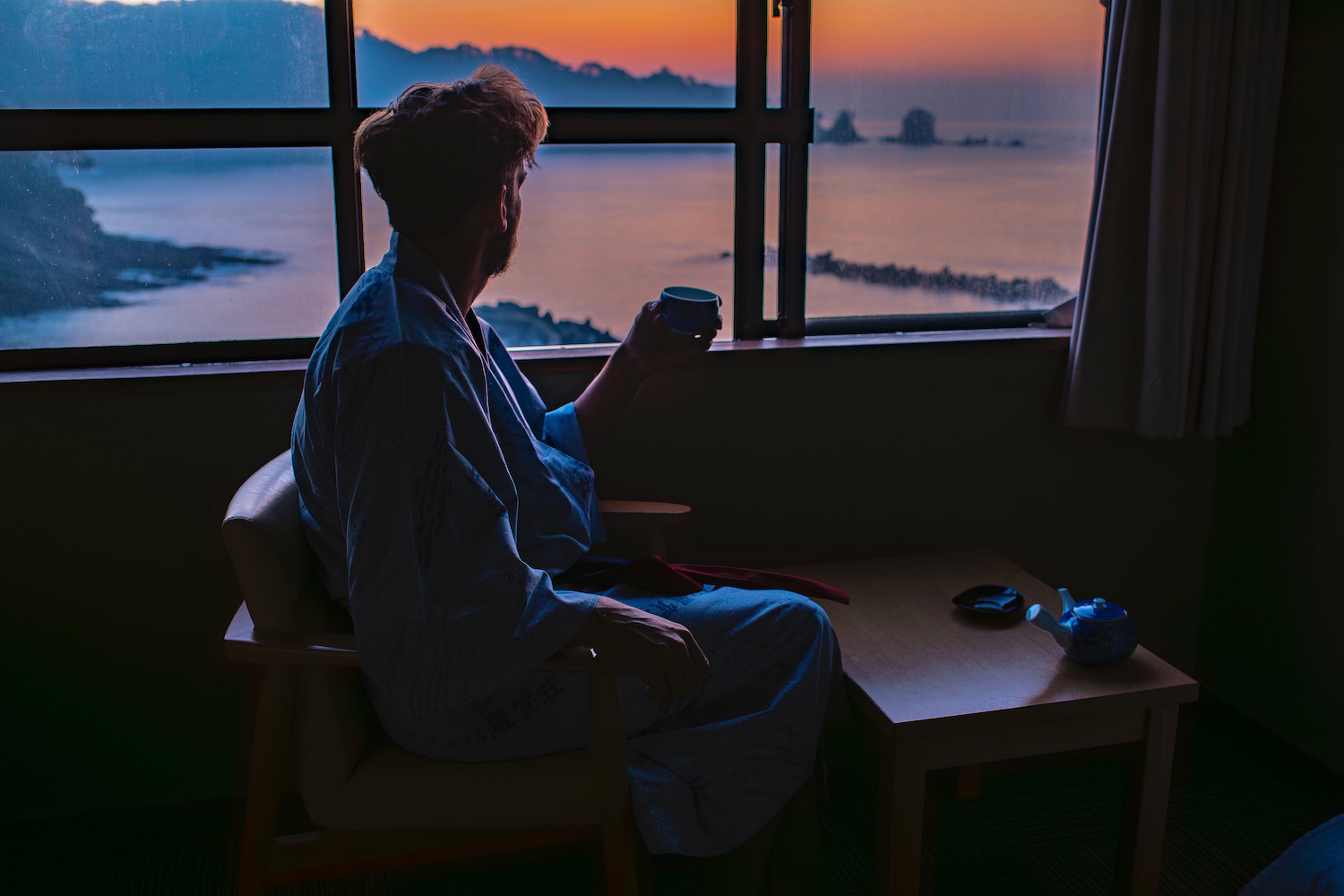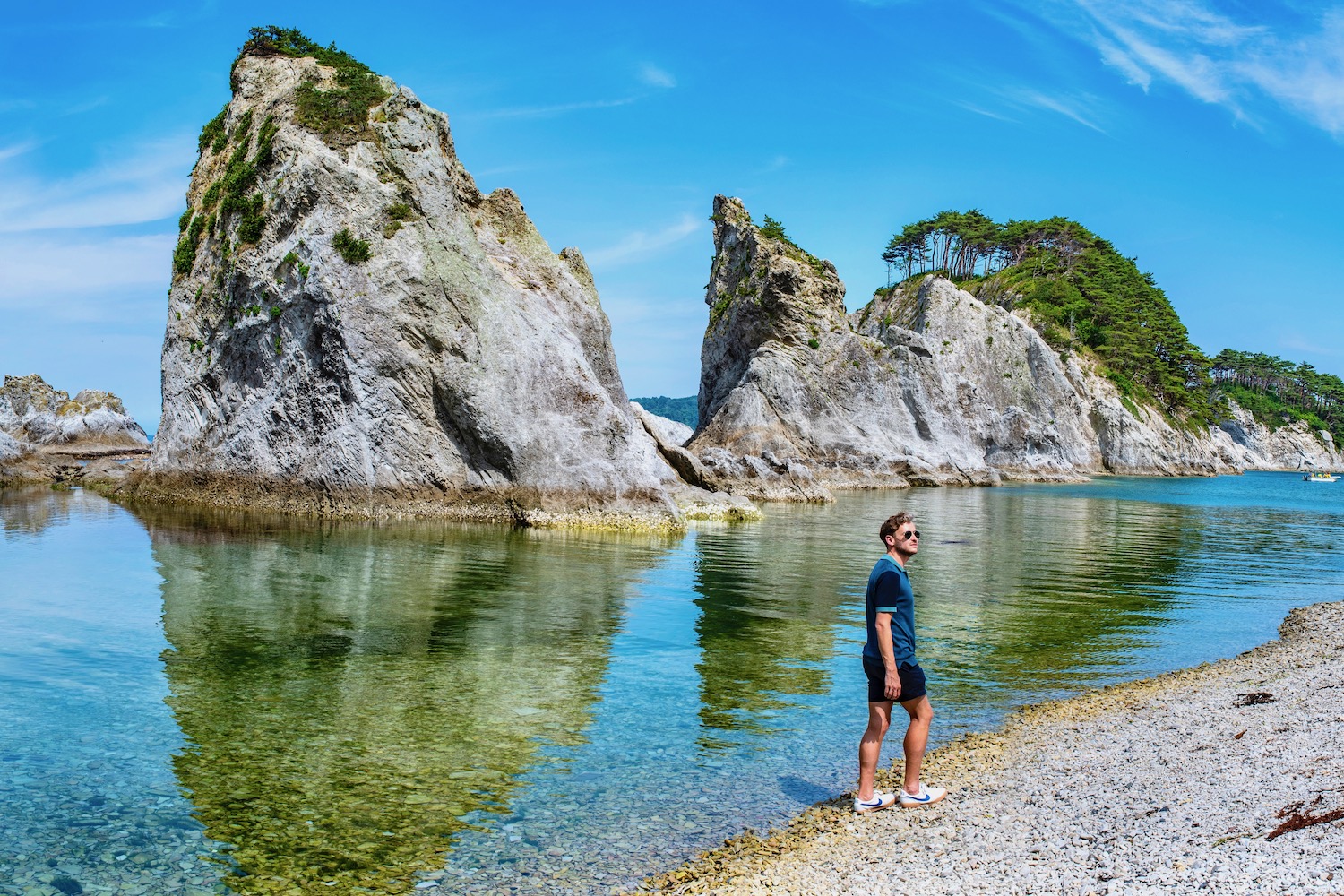Along Japan’s Sanriku Coast around the time of the summer solstice, sun starts coming over the horizon just after 3 AM each morning. I should know, because I woke up to see it every day on my recent trip through the region.
On some days, like the first, it was slow and deliberate, and never reached much of a crescendo. While the sun rose wholly in the clear sky, as a fully-formed amber orb, no hue more vivid than blush or maybe cantaloupe streaked overhead.
This perfectly foreshadowed what would end up transpiring during the 15 hours of daylight that followed. Both the Kitayamazaki Coast and Jodogahama Beach effused a sufficiently fierce beauty, but neither scene quite caused me to lose my breath.
Mornings two and three, and the days they kicked off, were real show-stoppers. The second, for its part, was mostly cloudy; a thick strip of shocking pink seared its way through a break in bleakness. The third, meanwhile, saw wisps of water vapor whose hue I can compare only to the maguro on my plate in Miyako later that night.
That, and maybe the beards of the wild irises that stood beneath the stand of twisty pines along the Goishi Coast, where I briefly thought I might die. As I frolicked through the forest, the only foreigner—and, truth be told, one of the only humans—an announcement blared out that someone had spotted a bear.
I tried to embody the energy of the Kamaishi Daikannon standing bravely on her perch, knowing that the sea she faces brings certain death every few decades: She has no choice but to remain where she is.
Four was similar to how three had been, except that I watched it from my hotel’s bathtub (which admittedly had a better view than most viewpoints in Japan) instead of right on the beach.
Five was just disappointing. Although the sky was clear, a sheet of nimbostratus too thick for even a star to penetrate it hung on the horizon, making even the timeless canvas of Matsushima seem flat and forgettable.
And what for sunsets, you ask? Well, it was only that evening in Ishinomaki where I found myself facing westward for the first time.
And while the city (which, according to its tsunami museum, was “a perfectly nice town” before the wave) might have seemed a less than compelling backdrop, I found it came fully alive only under the slow scream of fuchsia, tangerine and aubergine.
I returned to Saigyo-modoshi-no-matsu the next morning, my last morning in Sanriku. Though the sunrise itself was slightly less disappointing than the first go around had been, I had to contend with another factor, one even farther outside my control: The rising sun was so far north on the horizon it barely illuminated the shot.
As I drove along the expressway toward Sendai to return my car and head back toward Tokyo, I felt at once as if I had spent too long in Sanriku, but also that I had experienced it only superficially. As a series of six sunrises (and one notable sunset), plus the places where light from them had reflected brightly enough (and for long enough) to summon me there.
It wasn’t my first trip to this part of Japan—and it won’t be my last. I hope I’ve compelled you to add it to your list, at least.
